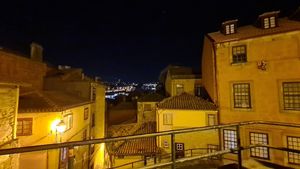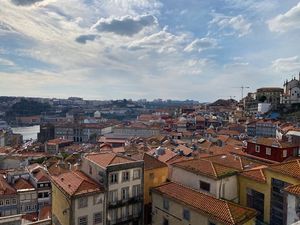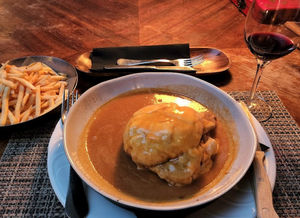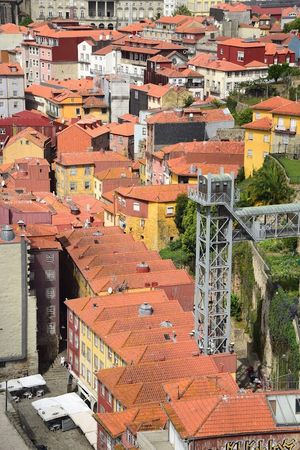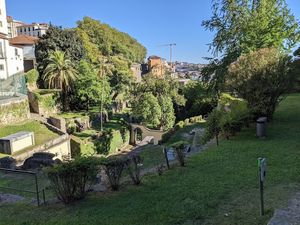Church and Museum of São Francisco do Porto (Porto)
Table of Contents
Church and Museum of St. Francis of the Port
The Church of St. Francis is one of the most notable and visited churches in the city of Porto, Portugal. This religious building boasts a rich history and impressive architecture, attracting both tourists and faithful.
History
The Church of St. Francis was founded in the 13th century, initially as part of a Franciscan convent. The original construction was in the Gothic style typical of the time. However, over the centuries, the church underwent various transformations and expansions. Built during the reign of D. Fernando, the church replaced a modest temple of the Order of St. Francis, established in Porto in 1223.
Architecture
The church is famous for its impressive interior decoration in the Baroque style. One of the most striking features is the gold-paneled work that covers much of the walls and ceiling, primarily from the 17th and 18th centuries. It is estimated that over 300 kg of gold were used to adorn the church, making it appear as if it is covered in gold. The main façade contains a Gothic rose window and a Baroque portal, while the southern portal is a Gothic piece decorated with a pentagram.
Interior
The interior of St. Francis Church is a true treasure trove of sacred art. The high altar, side altars, and walls are richly decorated with gold-paneled work, sculptures, and tile panels. The Jesse Tree, a polychromed wooden sculpture, is one of the most significant works and represents the genealogy of Christ. Among the notable retables are those of the Chapel of Our Lady of Conception and that of St. Anthony, both from the 18th century.
Crypt and Catacombs
Below the church lies the catacombs, where many members of the nobility and clergy were buried. The catacombs are open to the public and offer an intriguing part of the visit, providing a glimpse into the funerary customs of the time. The visit includes a fascinating view through a window on the floor of the catacombs, revealing hundreds of bones.
Cultural Significance
The Church of St. Francis is not just a religious monument but also an important tourist and cultural attraction of Porto. It is a notable example of the artistic and historical wealth of the region. During the Napoleonic invasions, the church was looted, and many of its treasures were lost. The church was classified as a National Monument in 1910.
Curiosities
One curiosity is that the church was used as a warehouse for customs after the extinction of religious orders in 1834. The ruined cloister was demolished to construct the Stock Exchange of Porto. The visit to the church includes access to the Museum of the Third Order of St. Francis, which displays various religious relics and sacred art.
What to Visit in the Porto Council
The city of Porto, home to the Church of St. Francis, is rich in history, culture, and architecture. A must-visit location is the Aliados Avenue, the beating heart of the city, where the Porto City Hall is located. The São Bento Station, with its magnificent tile panels, is another mandatory stop.
Don't miss the Santa Catarina Street, the main commercial street in the city, featuring the historic Café Majestic and the Capela das Almas with over 15,000 tiles. Another essential place to visit is the Mercado do Bolhão, recently renovated, where you can experience the authenticity of local products. For a nighttime experience, the Paris Galerias are the ideal location, offering a vibrant nightlife and bustling bars.
Location
Address: Rua do Infante D. Henrique, 4050-297 Porto, Portugal
Closest Attractions
The distance is the shortest or by air.
Map View
Showing 21 attractions on the map
distance: 0.03 kilometers
distance: 0.07 kilometers
distance: 0.13 kilometers
distance: 0.13 kilometers
distance: 0.19 kilometers
distance: 0.26 kilometers
distance: 0.27 kilometers
distance: 0.3 kilometers
distance: 0.31 kilometers
distance: 0.33 kilometers
distance: 0.34 kilometers
distance: 0.35 kilometers
distance: 0.37 kilometers
distance: 0.38 kilometers
distance: 0.38 kilometers
distance: 0.4 kilometers
distance: 0.4 kilometers
distance: 0.41 kilometers
distance: 0.42 kilometers
distance: 0.44 kilometers


 Português
Português French
French Español
Español







